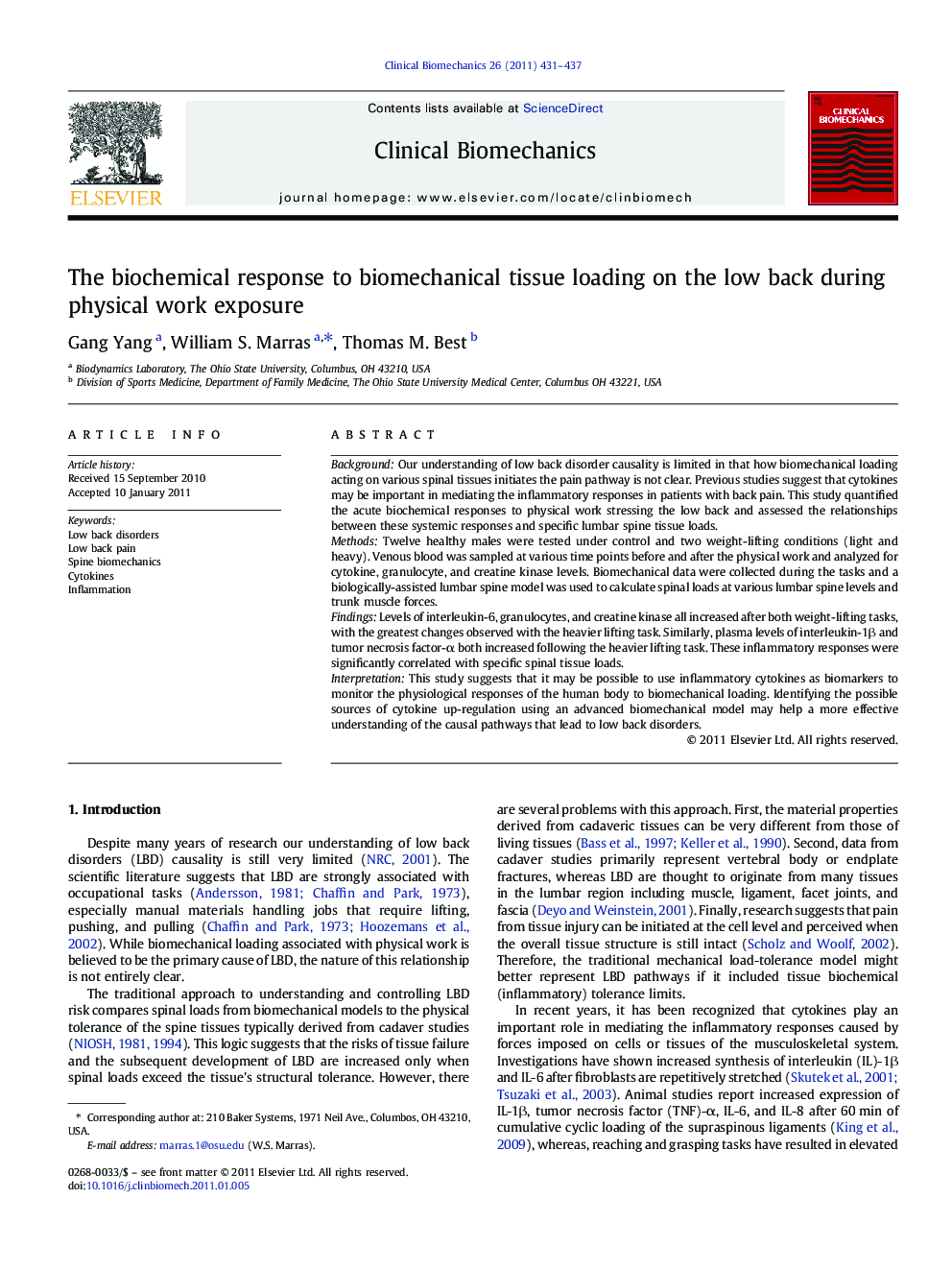| Article ID | Journal | Published Year | Pages | File Type |
|---|---|---|---|---|
| 6205077 | Clinical Biomechanics | 2011 | 7 Pages |
BackgroundOur understanding of low back disorder causality is limited in that how biomechanical loading acting on various spinal tissues initiates the pain pathway is not clear. Previous studies suggest that cytokines may be important in mediating the inflammatory responses in patients with back pain. This study quantified the acute biochemical responses to physical work stressing the low back and assessed the relationships between these systemic responses and specific lumbar spine tissue loads.MethodsTwelve healthy males were tested under control and two weight-lifting conditions (light and heavy). Venous blood was sampled at various time points before and after the physical work and analyzed for cytokine, granulocyte, and creatine kinase levels. Biomechanical data were collected during the tasks and a biologically-assisted lumbar spine model was used to calculate spinal loads at various lumbar spine levels and trunk muscle forces.FindingsLevels of interleukin-6, granulocytes, and creatine kinase all increased after both weight-lifting tasks, with the greatest changes observed with the heavier lifting task. Similarly, plasma levels of interleukin-1β and tumor necrosis factor-α both increased following the heavier lifting task. These inflammatory responses were significantly correlated with specific spinal tissue loads.InterpretationThis study suggests that it may be possible to use inflammatory cytokines as biomarkers to monitor the physiological responses of the human body to biomechanical loading. Identifying the possible sources of cytokine up-regulation using an advanced biomechanical model may help a more effective understanding of the causal pathways that lead to low back disorders.
